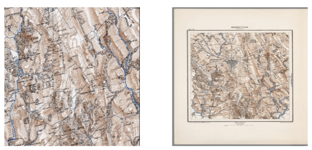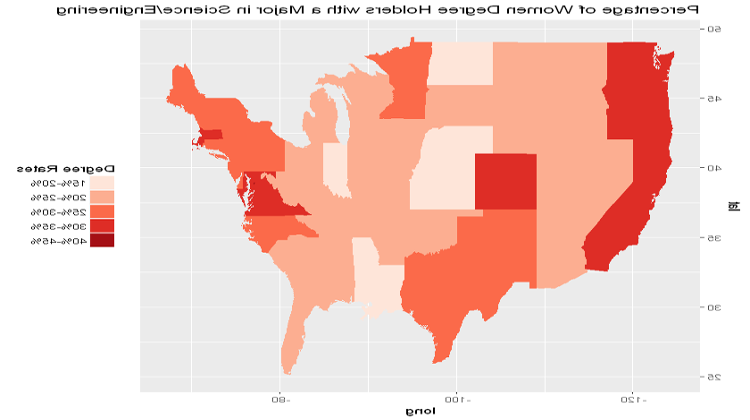Student Research
Summer 2021 DCS Student Research Projects
Below are DCS coordinate majors and minors science research projects, some of which were featured at Bowdoin's Annual President's Symposium, Family Weekend 2021.

"Sensing Computers: The Impact of Increased Abstraction on the Programmer’s Experience"
A Surdna Foundation Undergraduate Research Fellowship
mentored by Professor Crystal Hall

Evren Uras '23
"How to Erode a Digital Plutocracy for Good"
A Peter J. Grua and Mary G. O'Connell Research Award
under the guidance of Professor Fernando Nascimento

Student Research from Previous Years
Digital & Computational Studies Majors Class of 2021 Capstone Projects
DCS was well-represented at 2019 President's Symposium.
Visit the Bowdoin News recap to learn about the works from other students who presented.
What Could Joshua Chamberlain See At Gettysburg?
Gabriella Papper, Class of 2018
During the summer of 2017 I worked with Professor Hall to answer the question “What could Joshua Chamberlain see at Gettysburg?” using historical evidence and computational tools.
Digital humanities methods and tools enabled us to reconsider the Battle of Little Round Top at Gettysburg. Chamberlain is well known for ordering a bayonet charge that helped the Union line secure Little Round Top. He is also a prominent figure in Bowdoin’s history. Until now, Chamberlain’s line of sight and perspective during the battle have not been thoroughly examined.
I worked with the visualization software Gephi to create a network of Chamberlain’s correspondence. Using over 500 original letters that were available in Bowdoin’s Special Collections and Archives, I created visualization networks that focus on the Civil War and Chamberlain’s correspondence overall. Gephi enabled us to repurpose the original letters to gain insight into the humanistic side of Chamberlain’s decisions during the battle. (Visualizations below)


I then used GIS, a mapping software, to examine the geography of Little Round Top and compare the accuracy of historical and modern maps. I created an image that shows the visibility at Little Round Top from Chamberlain’s position (visualization below, green is visible and pink is not). The digital tools had to account for variables in this project, which included whether Chamberlain was crouching or standing, what the vegetation was like in July, 1863, and how dense the army line was.


Through this research in digital humanities, I was able to create a richer narrative of Chamberlain’s vision at Little Round Top by combining contemporary tools with historical evidence. The information from this research will be incorporated into a new and innovative class offered as part of the Digital and Computational Studies Initiative this fall. I am extremely grateful to Professor Hall, the Gibbons Fellowship, and Bowdoin’s resources for the chance to be part of this new and exciting initiative.
Faculty Mentor: Professor Crystal Hall
Funded by the Gibbons Fellowship

Digital Study of Gossip in Jane Austen
Title: "A Digital Study of Gossip in Emma."
By: Phoebe Bumsted '17
In Fall 2016 and Spring 2017, English and Computer Science major Phoebe Bumsted conducted an independent research project studying gossip in Jane Austen's Emma using digital tools.

Summer 2016 Gibbon's Fellowship
Title: Sweet Blood: History and the Nature of Diabetes and Chronic Disease in America
By: Wendy Dong '18
Recent history and studies alike have shown that chronic diseases are social and historical issues, in addition to biological. In this project, we focused on type 2 diabetes and zeroed in on the United States Native American population. After collecting all the data needed on this demographic, we hope to move on to other minority groups within the United States.

Network Analysis of Metadata
Title: "Student Email Ego Network"
By: Intentionally Anonymous
Ego Network Analysis allows us to combine network analysis with social science information. This student attempts to understand the network of student emails, focusing on the ego and how their personal network is affected.

GIS for Historical Recreation
Title: "Joshua Chamberlain's Legacy - Challenged by Technology"
By: Ana Timoney-Gomez
Could Joshua Chamberlain have known what he was sending his troops into? Timoney-Gomez suggests due to the geography of the land, we cannot be certain he did. Using GIS, she is able to recreate the scene we know today as the Battle for Little Round Top.

Reflections on Technology
Title: "Final Essay"
By: McKenna Thomas-Franz
"While it is important to understand the basics behind Python coding or XML or fractal analysis, these tools are still being placed in the hands of us, the humans, so we need to understand what we bring to the table in a growing technological world."

Spatial and Statistical Analysis of Degree Holders in STEM Fields
Title: “Project Notebook”
By: Jason Greenberg
Research Question: Starting as early as their undergraduate career, do women face barriers to entry into or have strong preferences against entering STEM related fields, specifically the sciences and engineering, due to their gender? Also, does region within the United States impact this gender disparity?

Network Analysis of International Diplomacy
Title: “Project Notebook”
By: Jack Weiss
For centuries treaties have shaped and manipulated borders, security, and trade. Do certain countries influence treaty making and international relations more than others? Do these specific power brokers enhance national security and make the world a safer place?

Statistical Analysis of Attributes of First Generation Students in the United States
Title: “Project Notebook”
By: Karla Olivares
"While it is important to understand the basics behind Python coding or XML or fractal analysis, these tools are still being placed in the hands of us, the humans, so we need to understand what we bring to the table in a growing technological world."

Network and Statistical Analysis of SNL’s History
Title: “A Look At Saturday Night Live and Its Rising Political Influence” with Supporting Gephi Figure
By: Simon Cann
SNL has always relied on parody and satire of current events as sources for comedy. At what point does the comedic representation become a instrument for the expression and criticism of political thought? Can a comedy show be a serious player in shaping national perceptions of individuals and ideas?

The Nature of Data: Introduction to Environmental Analysis
Title: Regional Differences in Media Responses to the Katahdin Woods and Waters National Monument
By: Allie Briggs with Sabina Hartnett and Roya Moussapour
Using digital tools to examine regional differences in perceptions towards the proposed Katahdin national monument. Is attitude different? Does the media portray the controversy differently? How do responses differ?